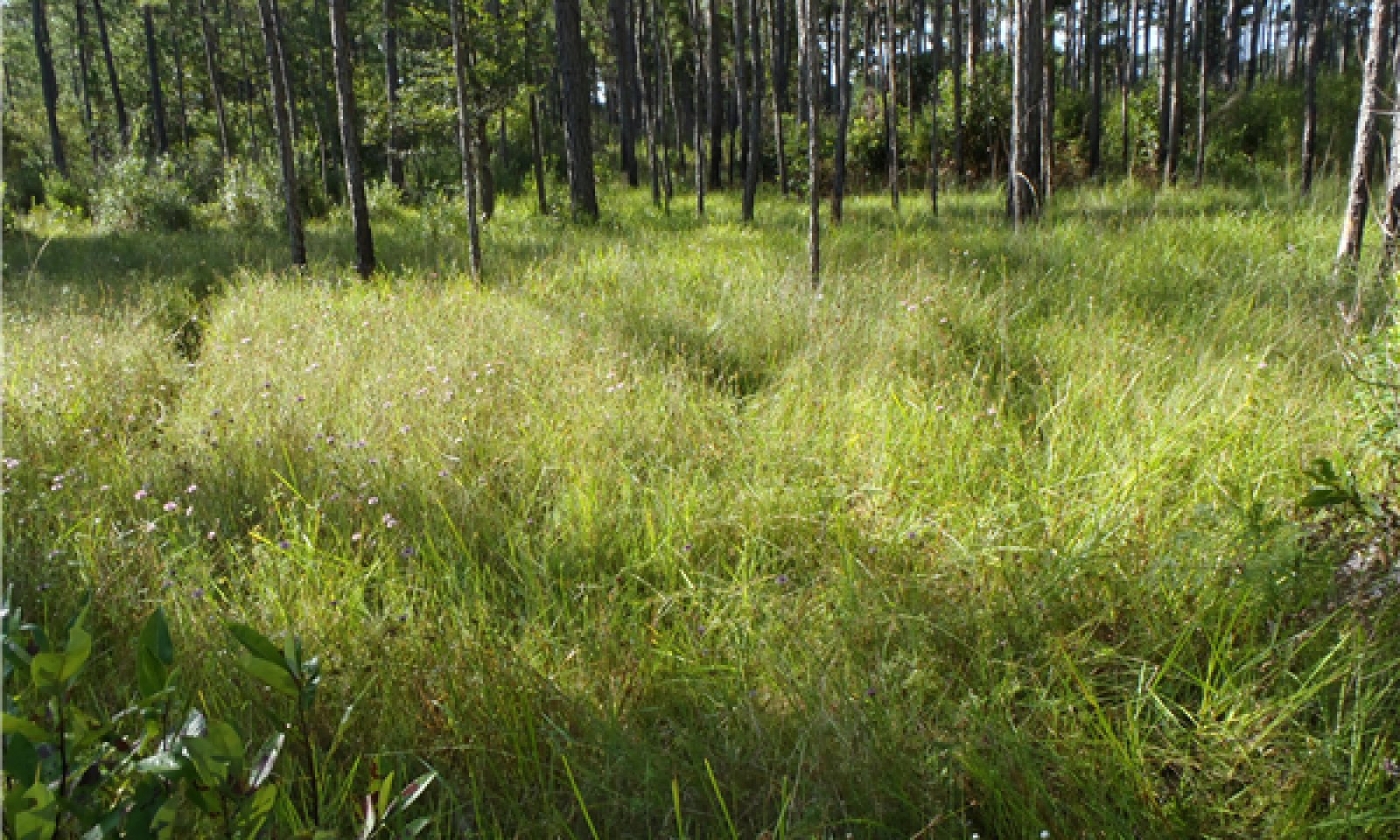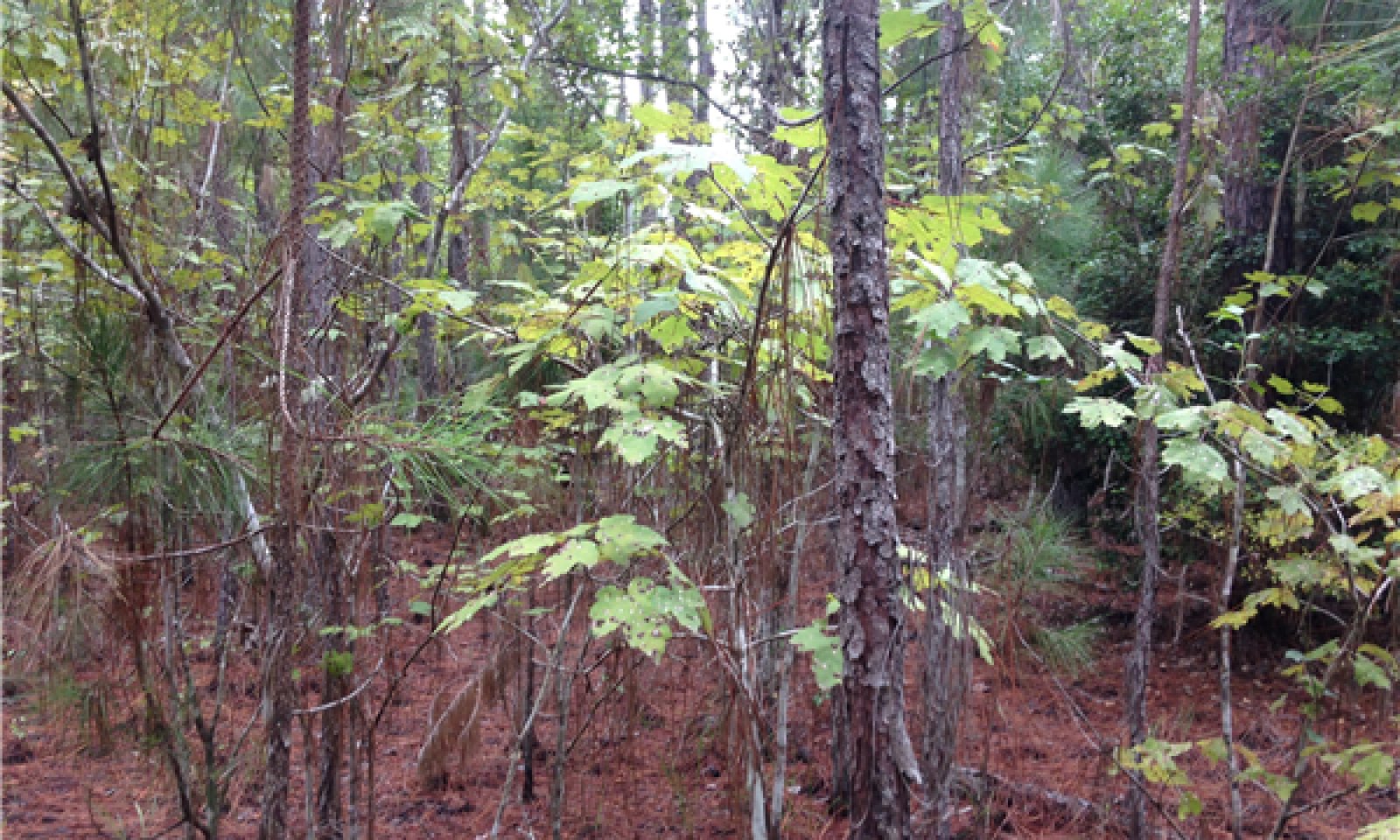
Sodic Flats
Scenario model
Current ecosystem state
Select a state
Management practices/drivers
Select a transition or restoration pathway
-
Transition T1A
Absence of disturbance, coupled with natural regeneration over time
More details -
Transition T1B
Merchantable timber is harvested by clearcut and site is planted to a monoculture of pine trees
More details -
Transition T1C
Removal of native vegetation and introduction of improved forage species or annual crops
More details -
Restoration pathway R2A
Reduction of overstory canopy using fire and selective thinning.
More details -
Transition T2A
Merchantable timber is harvested by clearcut and site is planted to a monoculture of pine trees
More details -
Transition T2B
Merchantable timber harvested by clearcut, followed by planting of improved forage species or annual crops
More details -
Restoration pathway R3A
Selective harvest combined with reintroduction of natural disturbances and native species
More details -
Transition T3B
Lack of natural/anthropogenic disturbance and natural regeneration over time
More details -
Transition T3A
Timber harvest by clearcut, followed by planting improved forage species or annual crops
More details -
Transition T4A
Lack of natural/anthropogenic disturbance and natural regeneration over time
More details -
Transition T4B
Site is planted to a monoculture of pine trees
More details -
No transition or restoration pathway between the selected states has been described
Target ecosystem state
Select a state
Description
The Sodic Flat ecological site is a Longleaf Pine/Loblolly Pine Woodland. The saltiness of the site, influence by bioturbation, and seasonally perched water table greatly affect the available nutrients, especially with aluminum and magnesium. This stunts the growth of the overstory trees and creates a diverse understory. The result is a park-like appearance. The amounts of fine-fuel litter accumulation allow fires to burn frequently, every 3 to 5 years. All of these factors contribute to the openness of the site, generally 40 to 60 percent canopy cover. In parallel, sites typically have basal areas of 70 to 90 square feet per acre.
Submodel
Description
A long-term lack of fire and management has caused the community to cross a threshold resulting in the Mixed Forest State (2). The crossing of this threshold represents a closure in the overstory canopy, which limits the productivity of the ground layer. The limited ground layer does not provide enough fuel to harbor a burn with the intensity found in State 1. Fire-intolerant hardwoods have become part of the overstory. The overstory trees are overstocked and limit the growth of neighboring species. The overstocking reduces tree growth and causes stress, making them vulnerable to attacks from insects and/or diseases. Longleaf recruitment may be nonexistent due to lack of light and bare ground. Loblolly pine will especially take advantage of the current conditions. The plant communities will stay in this constant state and continue to age without disturbance or intervention.
Submodel
Description
The Plantation State is a result of conversion activities. The landowner has maximized silviculture production by planting a monoculture of pine species, usually loblolly pine, but sometimes slash pine (Pinus ellioti) is planted.
Submodel
Mechanism
The transition from a Longleaf Pine/Loblolly Pine Woodland (State 1) to the Mixed Forest (State 2) is a result of time and long periods (greater than 10 years) of no fire and/or forest management practices. Without fire to suppress tree seedlings, biomass and diversity is lost from the grass and forb layers of the system.
Mechanism
The transition is due to the land manager maximizing silviculture potential. Merchantable timber is harvested by clearcut. Then, the site is prepared and planted to a monoculture of pine or hardwood trees.
Mechanism
The transition is due to the land manager maximizing agricultural production. Merchantable timber is harvested by clearcut. Then, the site is prepared and planted to either an improved grass or row crops.
Mechanism
Restoration of this community to the reference state begins with a selective timber harvest. Removing unwanted trees opens up the canopy, allowing sunlight penetration to the ground. Years of overstory growth have limited the fuel necessary to have an effective fire. Time will be needed to encourage understory growth. Once the herbaceous layer has established, more frequent than natural burns (1 to 2 years) may be required to suppress the woody vegetation.
Mechanism
The transition is due to the land manager maximizing silviculture potential. Merchantable timber is harvested by clearcut. Then, the site is prepared and planted to a monoculture of pine trees.
Mechanism
The transition is due to the land manager maximizing agricultural potential. Merchantable timber is harvested by clearcut. Then, the site is prepared and planted to either an improved grass or row crops.
Mechanism
When restoring a plantation, the land manager can either clearcut the timber and begin as in the previous example. Otherwise, gap-phase regeneration is possible through selective timber harvests. This involves replanting the desired overstory species in small openings within the current structure of the woodland. The benefit is a slow progression of restoration instead of starting from primary succession.
Mechanism
This community transition is caused by neglecting the plantation understory. Without fire, mowing, or herbicides, unwanted understory saplings can begin to grow into the overstory.
Mechanism
The transition is due to the land manager maximizing agricultural production. Merchantable timber is harvested by clearcut. Then, the site is prepared and planted to either an improved grass or row crops.
Mechanism
This community transition is caused by neglecting crop, pasture, or plantation. Without continuation of agricultural or silvicultural management first-successional herbaceous plants will occupy the ground layer, followed by shrubs, and eventually shade-loving, fire-intolerant overstory species.
Model keys
Briefcase
Add ecological sites and Major Land Resource Areas to your briefcase by clicking on the briefcase (![]() ) icon wherever it occurs. Drag and drop items to reorder. Cookies are used to store briefcase items between browsing sessions. Because of this, the number of items that can be added to your briefcase is limited, and briefcase items added on one device and browser cannot be accessed from another device or browser. Users who do not wish to place cookies on their devices should not use the briefcase tool. Briefcase cookies serve no other purpose than described here and are deleted whenever browsing history is cleared.
) icon wherever it occurs. Drag and drop items to reorder. Cookies are used to store briefcase items between browsing sessions. Because of this, the number of items that can be added to your briefcase is limited, and briefcase items added on one device and browser cannot be accessed from another device or browser. Users who do not wish to place cookies on their devices should not use the briefcase tool. Briefcase cookies serve no other purpose than described here and are deleted whenever browsing history is cleared.
Ecological sites
Major Land Resource Areas
The Ecosystem Dynamics Interpretive Tool is an information system framework developed by the USDA-ARS Jornada Experimental Range, USDA Natural Resources Conservation Service, and New Mexico State University.


